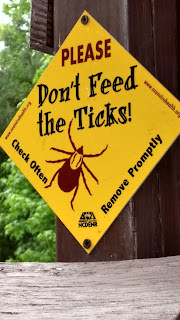Few things in the great outdoors make folks squirm as much as ticks, and for good reason. Besides being disgusting little critters, the insects can burrow into the skin and suck the blood of the host, whether it be a hiker (you), deer, dog or other animal. Ticks are not only pesky but also can carry dangerous diseases that could infect the host.
Tick prevention is important to keep in mind while hiking or doing other outdoor activities.
Here is some information from the American Hiking Society to help keep you safe while enjoying the outdoors.
Protect yourself against these potentially dangerous insects.
Summer brings warm weather and great hiking. Unfortunately, ticks appreciate the season as much as we do and they pose a serious threat to hiker health. Though ticks themselves seldom cause medical problems, the diseases they transmit can wreak havoc on a hiker’s body. Elrichosis, Lyme disease and Rocky Mountain spotted fever are just a few of the tick-borne pathogens of which hikers should be aware.
Here are a few easy steps to prevent tick-borne illness:
• Determine risk: Spring and early summer are high-risk for ticks because ticks are in an earlier stage of their development, called “nymphs.” Nymphs often carry heavier loads of disease-causing pathogens, and are smaller and harder to spot. Tall grass and brush are higher-risk, too, because ticks can easily climb on to hikers.
• Wear long and wear light! Wear long-sleeve shirts and long pants of a light color. Lighter colors seem...
https://americanhiking.org/resources/ticks/
Summer brings warm weather and great hiking. Unfortunately, ticks appreciate the season as much as we do and they pose a serious threat to hiker health. Though ticks themselves seldom cause medical problems, the diseases they transmit can wreak havoc on a hiker’s body. Elrichosis, Lyme disease and Rocky Mountain spotted fever are just a few of the tick-borne pathogens of which hikers should be aware.
Here are a few easy steps to prevent tick-borne illness:
• Determine risk: Spring and early summer are high-risk for ticks because ticks are in an earlier stage of their development, called “nymphs.” Nymphs often carry heavier loads of disease-causing pathogens, and are smaller and harder to spot. Tall grass and brush are higher-risk, too, because ticks can easily climb on to hikers.
• Wear long and wear light! Wear long-sleeve shirts and long pants of a light color. Lighter colors seem...
https://americanhiking.org/resources/ticks/
